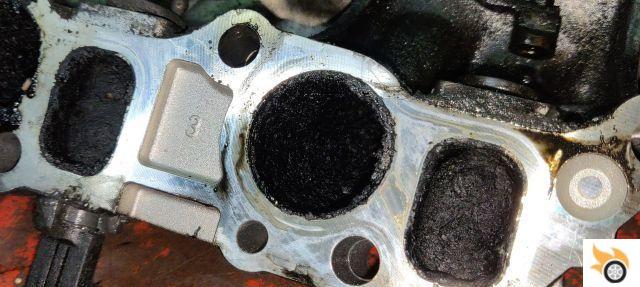
In this article, we'll cover the problems and breakdowns associated with a dirty intake manifold, as well as tips for spotting and avoiding these issues. We will also answer the question of whether a dirty intake can cause misfiring and highlight the importance of the intake manifold in the vehicle's combustion process.
What is an intake manifold and why is it important?
The intake manifold is an essential part of a vehicle's intake system. Its main function is to distribute air and fuel evenly to the engine's cylinders. This is crucial to ensure efficient combustion and optimal engine performance.
A dirty intake manifold can negatively affect engine performance and cause a host of problems and breakdowns. By accumulating dirt such as carbon and oil deposits, airflow is obstructed, which can result in incorrect fuel mix and incomplete combustion. This can lead to a decrease in engine power, an increase in fuel consumption and a higher emission of polluting gases.
How to detect a dirty intake manifold?
There are several signs that can indicate a dirty intake manifold. These include:
- Loss of engine power: If you notice that your vehicle is not having the same acceleration or power that it used to, this could be an indication of a dirty intake manifold.
- Increased Fuel Economy: A clogged intake manifold can affect the fuel-air mixture, resulting in increased fuel economy.
- Misfiring: A dirty intake manifold can cause the engine to misfire, manifesting as jerkiness or hard starting of the vehicle.
- Dark or strong-smelling exhaust emissions: If you notice exhaust smoke that is darker than normal or has a strong odor, this could be an indication of incomplete combustion due to a dirty intake manifold.
How to avoid problems with the intake manifold?
To avoid problems and breakdowns related to a dirty intake manifold, it is important to perform regular maintenance on your vehicle's intake system. Here are some tips:
- Change the air filter regularly: A clean air filter helps prevent dirt and contaminants from entering the intake manifold.
- Use quality fuel: Using low quality fuel can leave residue in the intake manifold. Opt for quality fuels and avoid refueling in places of dubious reputation.
- Clean the intake manifold periodically: If you suspect that your intake manifold is dirty, you can clean it using specific products or by going to a specialized workshop.
- Perform regular engine maintenance: An engine in good condition reduces the accumulation of dirt in the intake manifold. Perform oil and filter changes according to the manufacturer's recommendations.
Can a dirty intake cause misfiring?
Yes, a dirty intake can cause engine misfiring. When the intake manifold is clogged, airflow is restricted which can result in incorrect fuel mixture. This can make it difficult for the engine to start and lead to jerks, hard starting, and even blackouts.
It is important to note that misfiring can have multiple causes, so it is advisable to get a proper diagnosis done before assuming the problem is related to a dirty intake manifold.
Conclusion
The intake manifold is an essential part of a vehicle's intake system and its proper functioning is crucial for optimal engine performance. A dirty intake manifold can cause problems and failures such as loss of power, increased fuel consumption and misfiring. To avoid these problems, it is important to perform regular maintenance on the intake system and take preventative measures, such as changing the air filter and using quality fuel.
If you suspect that your intake manifold is dirty, we recommend that you go to a specialized workshop for proper cleaning. Remember that proper maintenance will prolong the life of your vehicle and ensure optimum performance.
Frequently Asked Questions (FAQs)
1. How much does it cost to clean an intake manifold in a workshop?
The cost to clean an intake manifold in a shop can vary depending on the make and model of the vehicle, as well as geographic location. On average, the cost can range from X to Y dollars. However, it is advisable to request a personalized quote at the workshop of your choice.
2. How often should I clean the intake manifold?
There is no single answer to this question, as intake manifold cleaning frequency can vary depending on the make and model of the vehicle, as well as driving conditions. However, as a general rule, it is recommended to clean every X kilometers or every X years. Consult your vehicle's owner's manual or contact the manufacturer for specific recommendations.
We hope this article has been helpful to you in understanding the problems and faults associated with a dirty intake manifold, as well as the tips to detect and avoid these problems. If you have any additional questions or experiences to share, feel free to leave a comment below. We would love to hear your opinion!
Until next time!


























